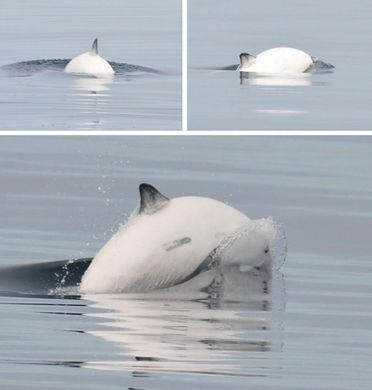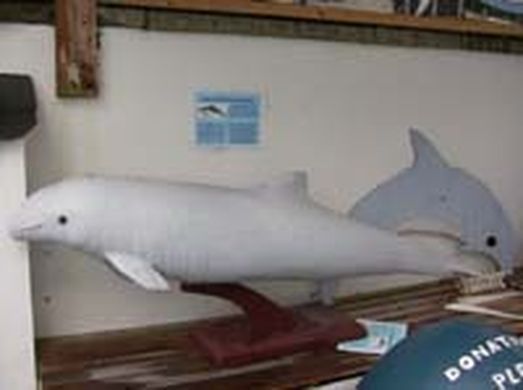"Mini Migaloo"- Leucoptic harbour porpoise bycaught off the west coast of Ireland in Irish records.
Unlike the massive 30 ton humpback whale, the harbour porpoise is the smallest cetacean to occur in Irish waters. However, similarly to the famous "Migaloo" sighted off the west coast of Australia, Ireland too has a record of a leucoptic whale, a harbour porpoise.
In a record to the Irish Naturalists Journal , authors Quigley and Flannery describe one of six harbour porpoises ( Phocoena phocoena ) bycaught in a drift net fishery for Atlantic salmon ( Salmo salar ) in 1988 off the Dingle coast, Co. Kerry, as being leucoptic (completely white in colour). The female measuring 1.76 cm in length lacked the characteristic had a pink iris typically seen in leucoptic individuals.The National Museum of Ireland and the British Museum of Natural History hold original photographs of the animal. A plaster cast replica of the leucoptic animal is currently held at the Irish Whale and Dolphin Group's Visitor Centre in Kilrush in Co. Clare.
According to Dr. Peter G.H. Evans, Director of Seawatch Foundation Oxford, an "albino" porpoise was sighted during a study of porpoises in the Shetland Isles, Northern Scotland in the early 2000's.
In a more recent publication, pictures of a leucoptic harbour porpoise were taken for the first time in the northern North Sea. Leucism is a total loss of pigment production in the body unlike albinism which is the loss of melanin. Only 7 leucoptic harbour porpoises in the world have been recorded in the last 100 years, as such to highlight it's rarity.
References:
Quigley, D.T.K., Flannery, K., (2002).Leucoptic Harbour porpoise Phocoena phocoena
(L.)Source: The Irish Naturalists' Journal, Vol. 27, No. 4, p. 170.
Robinson K.P., Haskins G.N. (2013) Rare sighting of an anomalously white Harbour porpoise ( Phocoena phocoena ) in the Moray Firth, north-east Scotland. Marine Biological Association of the United Kingdom , 6, E23.
SHARE THIS ARTICLE















